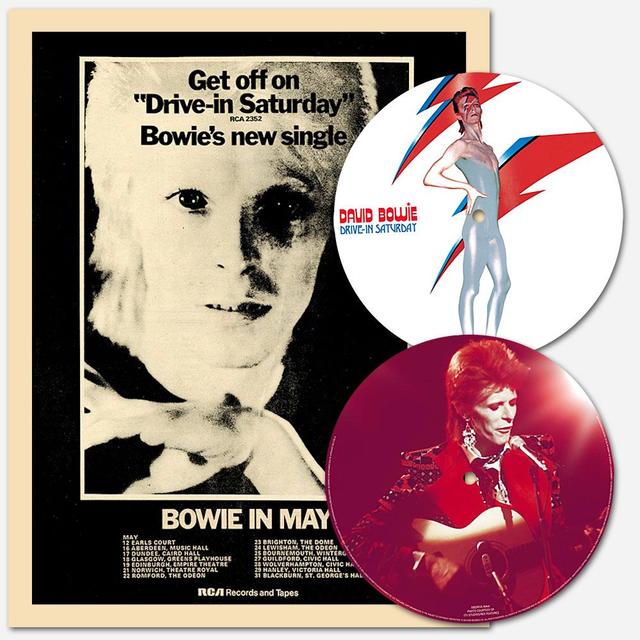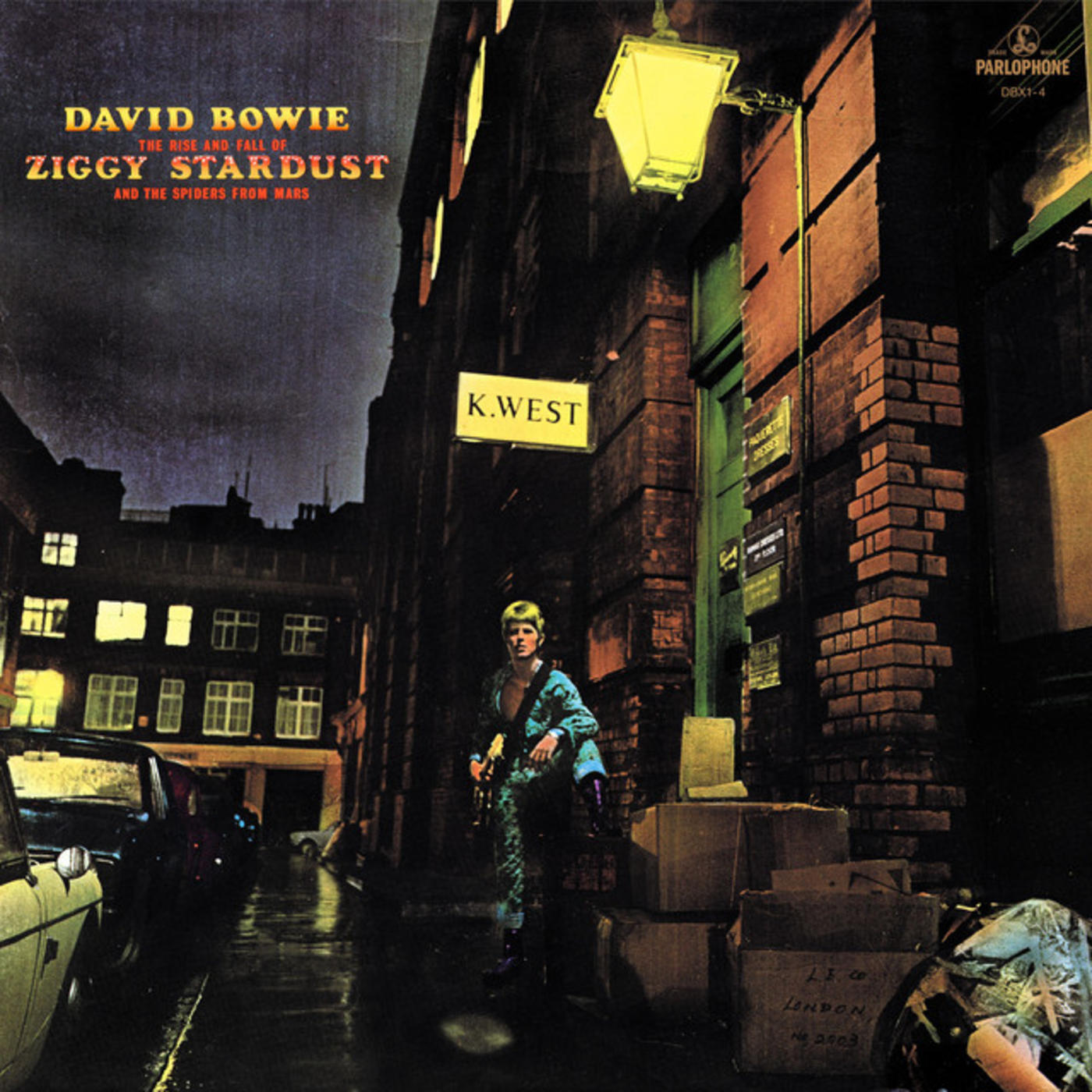April 1973: David Bowie Releases DRIVE-IN SATURDAY

In 1972, coming to America had a profound effect on David Bowie. The emerging star's virgin foray across the pond to tour the United States revealed a massive and fractured nation that seemed on the verge of an apocalyptic collapse. A far cry from the glitz and glamor that Hollywood fed to the rest of the world.
Seeing the dark underbelly of such cities as Detroit, where an innocent walk through downtown for lunch had Bowie and his bodyguard fleeing back to the safety of their hotel when local auto workers got a sight of the androgynous singer in a velvet blouse: "If I'm in a very light mood, I find everything in America so kitsch," Bowie told Circus in 1973. "Its wonderful, and I'd love to have it all hanging in my bedroom. If I'm in a bad mood, I find it terribly repressive and heavy."
After coming face to face to the denizens of the night (and their clientele) that walked the streets of Hollywood after dark when he landed in Los Angeles, Bowie continued to fill notebooks with lyrics and ideas for his new album. The concept was coming in clear: Aladdin Sane.
“There was a point in ’73 where I knew it was all over,” Bowie said at the time (via Rolling Stone) on creating the followup to The Rise and Fall of Ziggy Stardust and the Spiders from Mars. “I didn’t want to be trapped in this Ziggy character all my life. And I guess what I was doing on Aladdin Sane, I was trying to move into the next area – but using a rather pale imitation of Ziggy as a secondary device. In my mind, it was Ziggy Goes to Washington: Ziggy under the influence of America.”
It was a late-night train ride through the deserts of Arizona that influenced the album's third track, "Drive-In Saturday."
"Apparently they only let the train through this particular stretch of desert late at night," David explained about the journey. "But if you don't go to sleep when you are supposed to, you suddenly see the moon shining on seventeen or eighteen enormous silver domes. I couldn't find out from anyone what they were. But they gave me a vision of America, Britain and China after a nuclear catastrophe. The radiation has affected people's minds and reproductive organs, and they don't have a sex life. The only way they can learn to make love again is by watching video-films of how it used to be done."
It was towards the end of that U.S. tour that Bowie gave his estimation of America to a roomful of reporters at a press conference: "I feel the American is the loneliest person in the world," Bowie mused. "I get an awful feeling of insecurity and .. a need for warmth in people here. It's very, very sad. So many people in America are unaware that they are living."
That melancholy sadness permeates "Drive-In Saturday," as it details young lovers living a post-apocalyptic world learning about lust and desire through old Rolling Stones videos:
And try to get it on like once before
When people stared in Jagger's eyes and scored
Like the video films we saw
Recorded in New York City in December 1972, the sessions featured an impassioned saxophone solo from Bowie himself, and notable performances from longtime collaborators Mike Garson (piano), Mick Ronson (guitar), and Trevor Bolder (bass) and Mick Woodmansey (drums) holding down the rhythm section. The resulting "Drive-In Saturday" single was released on April 6, 1973, not long before Aladdin Sane landed in record stores.
"Drive-In Saturday" was an immediate hit in the UK, with the single soaring up the charts to reach #3. In Ireland, it flirted with the top 10 with a peak position of #14. In retrospect, the song is held in high regard by Bowie scholars. Writer Nicholas Pegg describes the track as "arguably the finest track on Aladdin Sane," as well as "the great forgotten Bowie single."

